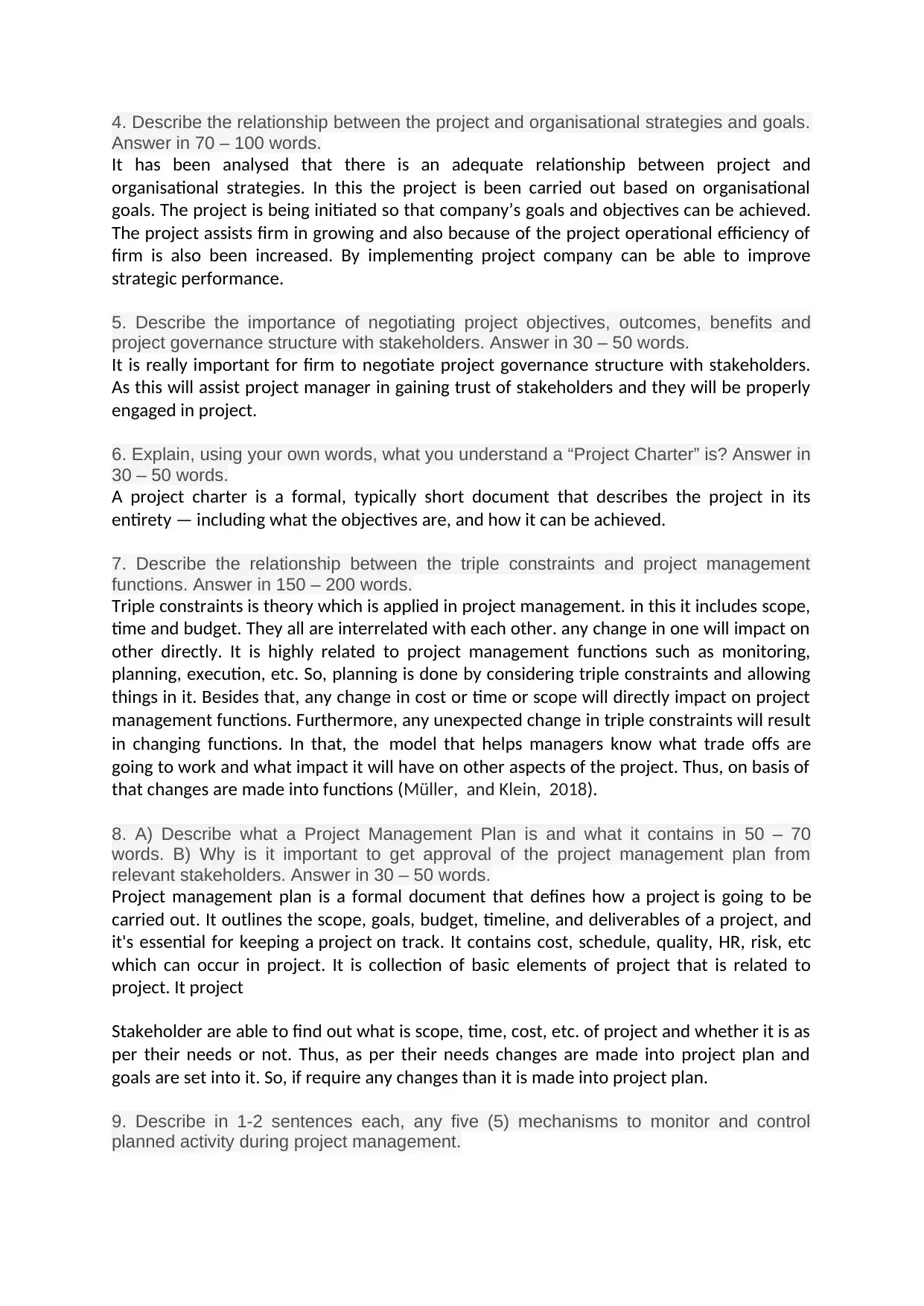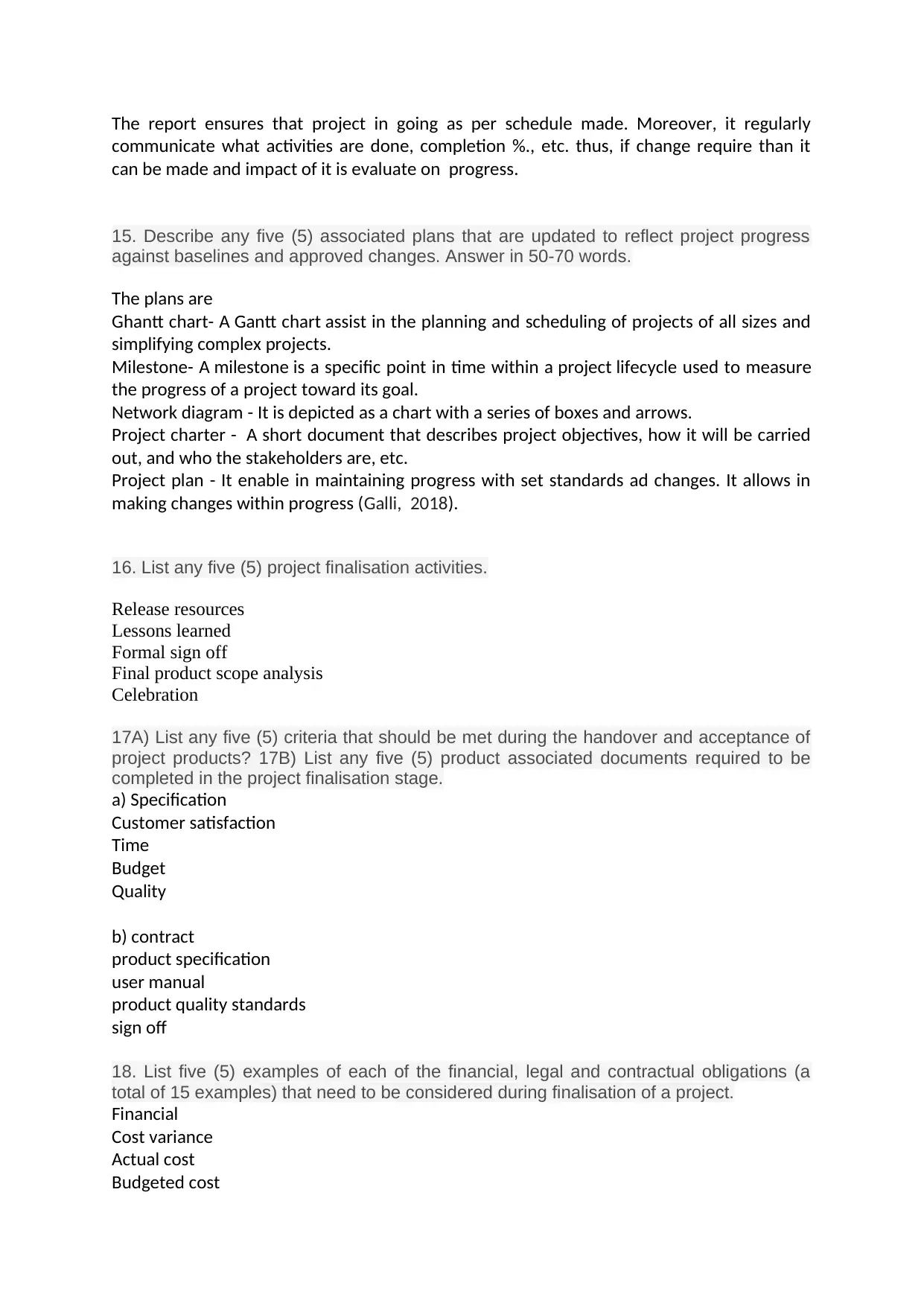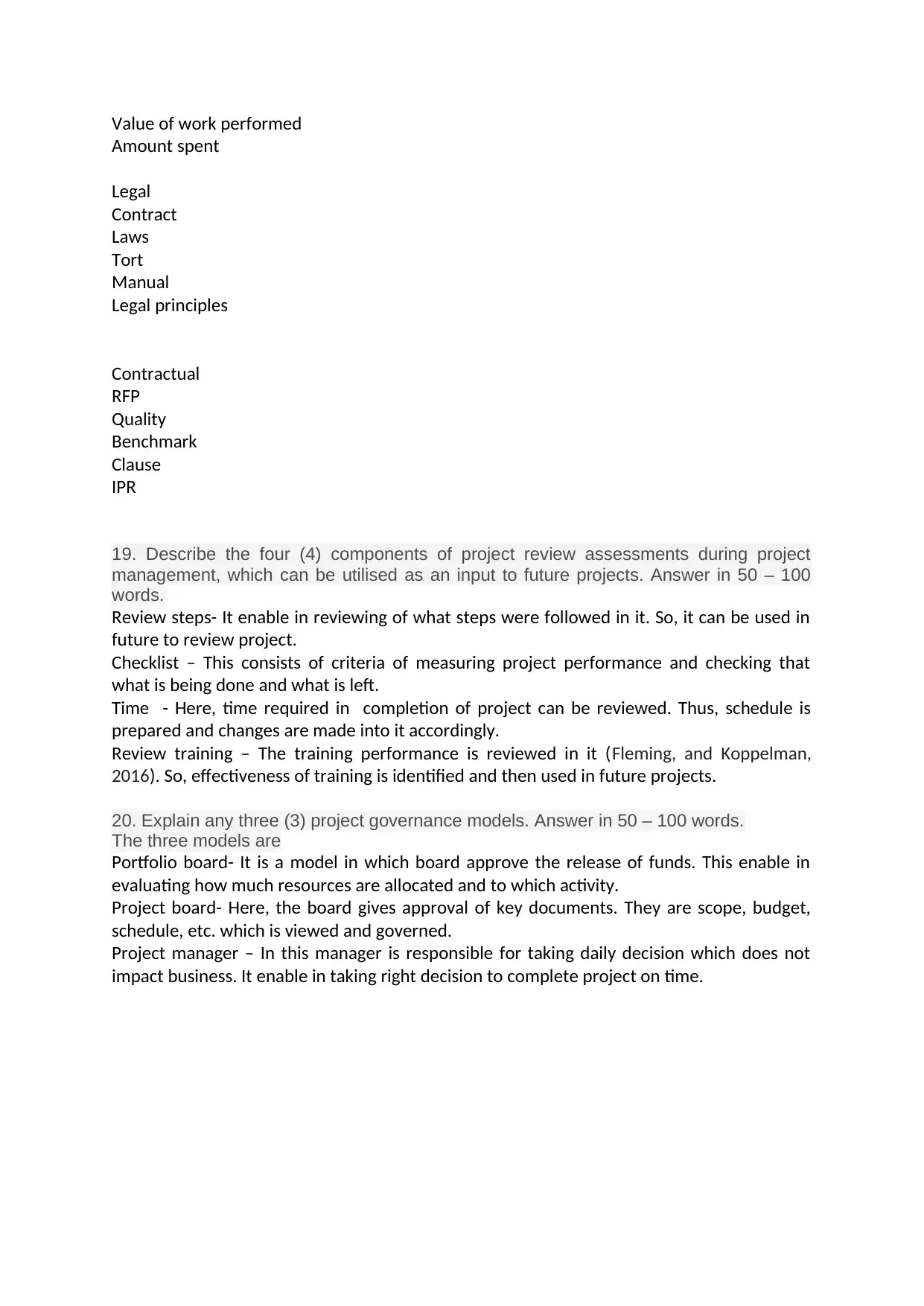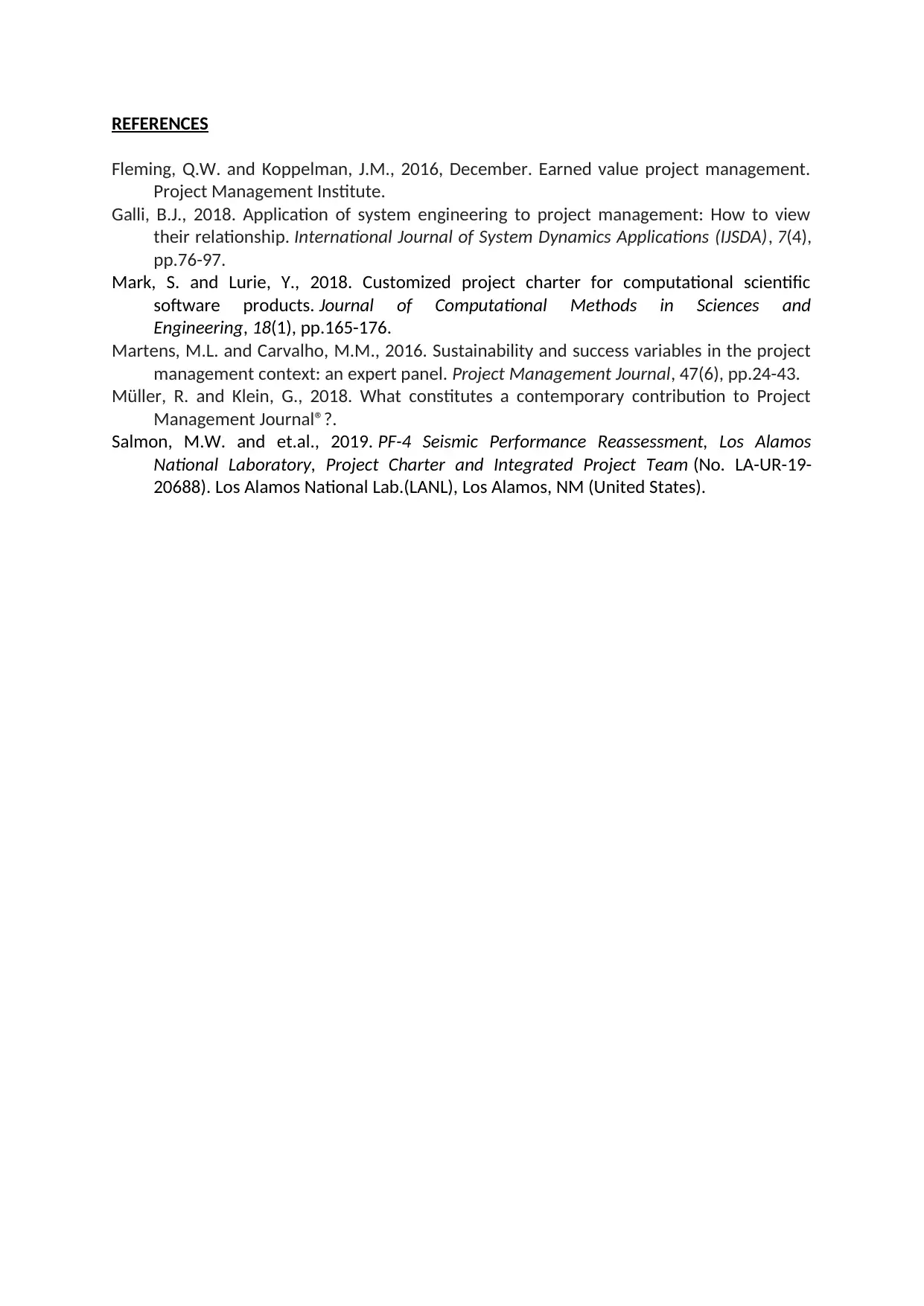This document provides an overview of the five phases of project life cycle, including initiation, planning, implementation, closing, and monitoring and controlling. It also describes the importance of organisational documents used during project initiation phase. The relationship between project and organisational strategies and goals is discussed, along with the steps to align project objectives with organisational objectives. Additionally, the document explains conflict resolution approaches, project management plans, and mechanisms for monitoring and controlling project activities. The significance of submitting status reports and performing impact analyses of change requests is highlighted, along with the importance of updating associated plans to reflect project progress. The concept of internal work environment and its effect on project management is also explored. Finally, the document covers project finalisation activities, handover and acceptance criteria, and financial, legal, and contractual obligations during project finalisation. It concludes with an explanation of project review assessments and project governance models.
![[object Object]](/_next/static/media/star-bottom.7253800d.svg)
![[object Object]](/_next/static/media/star-bottom.7253800d.svg)





